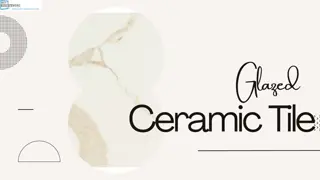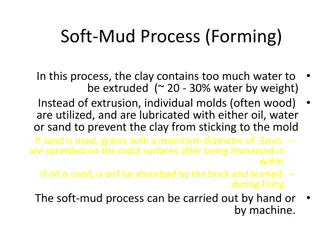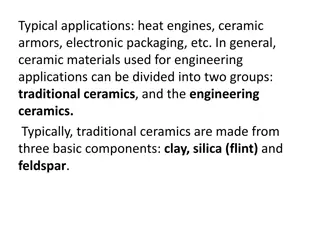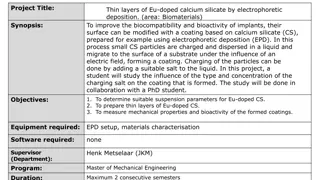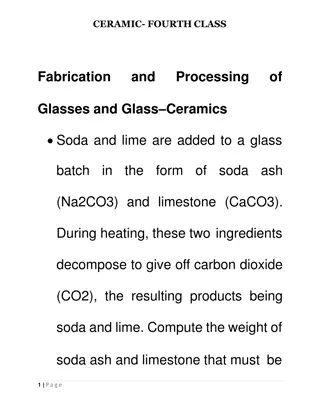Understanding Ceramic Basics: Clay, Types, and Firing Processes
Explore the world of ceramics with a focus on clay, its unique properties, types like earthenware and porcelain, stages of clay transformation, bisqueware, glazeware, cone temperatures in firing, and more. Delve into the art of working with clay and creating beautiful ceramic pieces.
Download Presentation

Please find below an Image/Link to download the presentation.
The content on the website is provided AS IS for your information and personal use only. It may not be sold, licensed, or shared on other websites without obtaining consent from the author. Download presentation by click this link. If you encounter any issues during the download, it is possible that the publisher has removed the file from their server.
E N D
Presentation Transcript
What is Clay? Clay is a fine-grained natural rock or soil material that combines one or more clay minerals with traces of metal oxides and organic matter.
How is it Made? Clay is made through natural processes of erosion and weathering of rocks. Different clays come from the erosion of different types of rocks.
Why is Clay Unique? Unlike mud or sand clay is unique in its physical properties. Clay is malleable (which means you can squish and squeeze it into a shape and it will retain that shape) because of it s ability to retain water. In ceramics we call this property of clay plastic. When clay is subjected to heat it undergoes a physical/chemical change that hardens the clay into ceramic, when clay has become hardened by heat we call it fired. This ability of clay to be plastic when wet and be hardened by fire is one of the unique aspects of clay.
Types of Clays There are many scientific categories for clay ( kaolinite, montmorillonite-smectite, illite ) but for our purposes there are fewer and more broad categories: -Earthenware -Stoneware -Porcelain
States of Clay Clay has a few different stages it goes through before it becomes a final finished piece of ceramics. It is critical that the stages be followed in the correct order: -Greenware -green (wet) -leatherhard -bone-dry -Bisqueware (first firing) -Glazeware (second firing)
States of Clay Bisqueware: -fired to a lower temp then final firing, less brittle then greenware, porous Glazeware: -fired to top cone temp, vitrified, most dense, non porous, glassy colored coating. Glaze colors come from chemical reactions not pigments. Green/Red copper Blue cobalt Yellow rutile Red/Black iron oxide Glaze can be applied by brushing, dipping, spraying When applying glaze you re either puttin it on or takin it off
Cone Temps In ceramic work it is critical that clay be fired to the correct temperature in a kiln. Those temperatures are dependent on the clay body and/or the glaze. Close attention needs to be paid to the clay bodies cone and the glaze cone. Firing at the wrong temp (too high or too low) will cause the ceramic piece to fail. Cone temps are divided into 3 main categories: -Low fire (cone 04-05) -Mid range (cone 6) -High fire (cone 9-10)
Cone Temps Clay wants to be fired to its top cone temp which will make it vitrified and therefore most dense and durable. Glaze wants to be fired to its top cone temp so that the chemicals in the glaze react appropriately. Be aware of the cone temp of your clay (in this course we are using a cone 10 porcelain casting slip). You can fire clay to a lower temp but NEVER a higher temp then it is designed for. Glazes need to be fired to their given cone temp.
Our Course Cone 10 Porcelain Slip: -bisque fire to cone 04-05 -can use any glaze -PAY ATTENTION TO THE CONE TEMP OF GLAZE USED! -Glaze fire to the correct cone temp for that glaze -DO NOT GLAZE BOTTOM -Ware that is ready for firing has to be put on correct rack. DOUBLE CHECK TO AVOID DISASTER!











